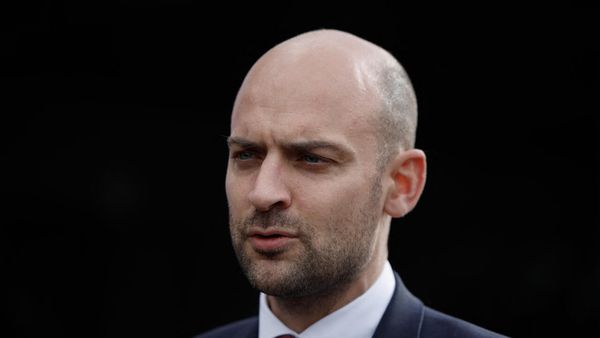
Good morning, dear readers. Or evening, if that’s when you’re getting to this (and if so, please turn off your overhead lights, you sickos).
Here’s another grab-bag of interesting things I read on the Guardian this week, in no particular order.
1. Good ideas for the office (from Sweden)

In Sweden, a $700 (5,000 SEK) annual allowance for “wellbeing activities” is “just the tip of the workplace wellbeing iceberg” (enjoyably weird phrase there from Leah Harper). Also part of this iceberg: no overtime, strong childcare and parental leave policies, four-week holidays – and holiday bonuses.
Try this at work: The Swedish tradition of fika involves stepping away from your desk to savour pastries and coffee with colleagues. Hard to do on a busy day in the newsroom? (Asking for a friend.) Then again, the Swedes interviewed here keep it to a tight 15 minutes. Surely doable.
How long will it take to read: five minutes.
2. Intimacy on screen, the gen Z way

Generational divide conversations, sex on screen: both tend to get people worked up, both tend to be, often, a bit cringe. But Aneesa Ahmed finds the nuance amid widespread predictions of the end of horny TV. Are the youth anti-sex? No, obviously. They’re just looking for, say, less misogynistic approaches to eroticism, or meaningful relationships not totally centred on traditional ideas of romance (or the end-goal of a nuclear family).
“I also don’t think this is an exclusively gen Z thing,” 23-year-old Yernur points out, reasonably. “Most people like the feelgood feeling of friendships.”
“I seek out what I find comforting and heart-wrenching and fanny-flutter-inducing,” 24-year-old Mia says. “I like it when I can learn about a character’s intimacy and connections and if it is through a sex scene then that’s fine.”
How long will it take to read: three minutes.
After something … less subtle? Here are 10 life lessons from Jilly Cooper (No 1: always wear cashmere).
… more wistful? Check out these 18th-century love letters to French sailors. Oh là là.
3. Reasons it’s fine and great to cry in public

Every couple of years people rediscover a map of places you can cry in public in New York. Useful – it’s not uncommon to come across someone sobbing there. Brandon Stosuy, curious about the moments people might abandon the social norm of, well, not crying in public, collected some of them into a book. Writer Sloane Crosley says:
I cry so much, you could salt pasta water with the tears on my cheeks. I do it regularly, with both joy and sorrow, at the sight of certain mementos or videos, but the most vivid instances involve witnesses.
Crying is good: take it from poet Hanif Abdurraqib, who likes crying on planes. Or the National’s Matt Berninger, who prefers his weeping in the early morning.
Normalise public crying.
How long will it take to read: five minutes.
Tell me: Have you ever cried in public? Where? Why? Write to me at australia.newsletters@theguardian.com. Best one gets a shout-out in my next epistle.
(And by the way …)
If you would like to receive these Five Great Reads to your email inbox every weekend, sign up here. And check out our weekly culture and lifestyle newsletter, Saved for Later, our twice-daily breaking news updates and all other Australian newsletters here.
4. Literature’s Machiavelli?

At 76, Andrew Wylie is almost as famous for “decadence and outrageousness” as he is for “ferocious pursuit of business”. But is the reign of “the world’s most mythologised literary agent” coming to an end? Alex Blasdel’s very interesting piece looks at how, exactly, Wylie “reshaped the business of publishing” – and what’s next.
What are literary agents again? “The matchmakers and middlemen of the book industry, pairing writers with publishers and negotiating the contracts for books, from which they take an industry-standard 15%.”
Which writers, exactly? Wylie and his firm, The Wylie Agency, operate on behalf of a list of more than 1,300 clients: from Nobel winners such as Saul Bellow, Joseph Brodsky, Albert Camus, Bob Dylan, Louise Glück, Yasunari Kawabata, Czesław Miłosz, VS Naipaul, Kenzaburō Ōe, Orhan Pamuk, José Saramago and Mo Yan, to “contemporary luminaries” including Chimamanda Ngozi Adichie, Karl Ove Knausgård, Rachel Cusk, Deborah Levy and Sally Rooney – as well as the estates of writers like Susan Sontag, Jorge Luis Borges, Chinua Achebe, William Shakespeare and Italo Calvino.
There are too many names to squash in here, actually. Read the story.
Andrew Wylie in his own words, apparently: “I have this sort of hollow core.”
How long will it take to read: 20 minutes.
5. Sharing a war with your ex

Mya Guarnieri is Israeli; her ex-husband, Mohamed, and their two children are Palestinian. Since the war began on 7 October, she writes, the pair “have all but remarried” – and their situation, “which was already complicated, seems impossibly so”.
This piece, in which she traces the way they find themselves drawing together – flaws and all – in the appalling days still unfolding, is quiet and incredible.
How long will it take to read: six minutes.
Further reading: you can find all our coverage on the situation here. As I write this, the latest update from the health ministry in Gaza reports at least 10,812 Palestinians, including 4,412 children, have been killed in Israeli strikes since 7 October. Don’t switch off the news.







